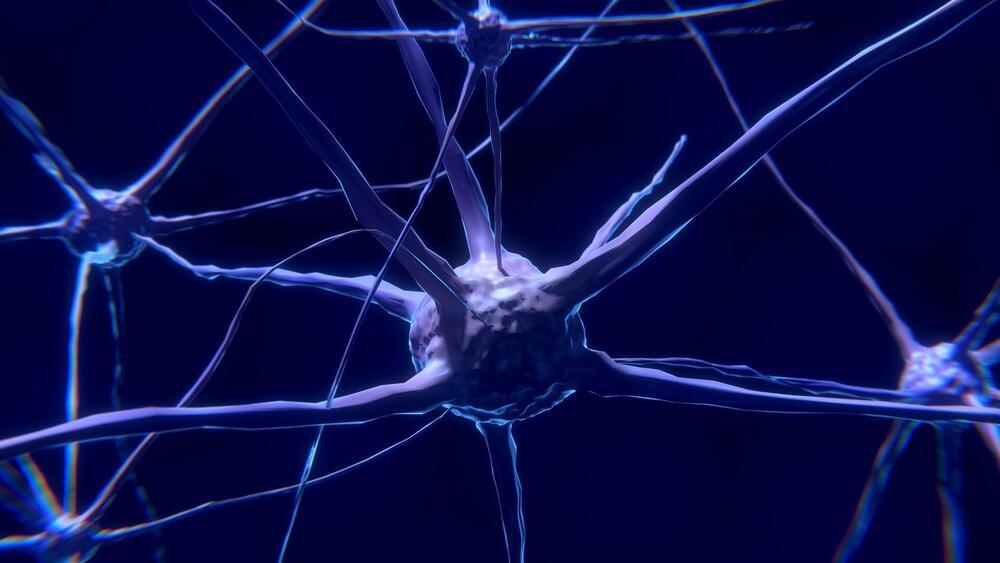The supermassive black hole has a mass billions of times that of the sun and is around 55 million light-years from Earth. Scientists used data gathered from more than a dozen telescopes worldwide to compile the picture.



Suvorexant (Belsomra), a dual orexin receptor antagonist approved for insomnia, reduced levels of tau phosphorylation and amyloid beta, a small clinical trialopens in a new tab or window showed.
The ratio of phosphorylated tau-threonine-181 (p-tau-181) to unphosphorylated tau-threonine-181 decreased 10% to 15% in cognitively normal adults treated with suvorexant 20 mg compared with placebo, reported Brendan Lucey, MD, MSCI, of Washington University School of Medicine in St. Louis, and co-authors.
Amyloid-beta levels fell 10% to 20% compared with placebo starting 5 hours after suvorexant administration, the researchers wrote in Annals of Neurologyopens in a new tab or window.
— Both amyloid and tau levels fell in early trial.
In this video I discuss new Photonic Chip for Quantum Computing.
The Paper: https://www.nature.com/articles/s41566-023-01193-1
The mentioned Video — Million Qubit Quantum Computer from Intel: https://youtu.be/j9eYQ_ggqJk.
Support me at Patreon: https://www.patreon.com/AnastasiInTech

Researchers from the Keck School of Medicine of USC have discovered that being exposed to a mixture of synthetic chemicals commonly present in the environment affects multiple crucial biological processes in both children and young adults. These processes include the metabolism of fats and amino acids.
<div class=””> <div class=””><br />Amino acids are a set of organic compounds used to build proteins. There are about 500 naturally occurring known amino acids, though only 20 appear in the genetic code. Proteins consist of one or more chains of amino acids called polypeptides. The sequence of the amino acid chain causes the polypeptide to fold into a shape that is biologically active. The amino acid sequences of proteins are encoded in the genes. Nine proteinogenic amino acids are called “essential” for humans because they cannot be produced from other compounds by the human body and so must be taken in as food.<br /></div> </div>

Researchers at Baylor College of Medicine have unraveled the processes that give astrocytes, the most abundant glial cell in the brain, their special bushy shape, which is fundamental for brain function. They report in the journal Nature that neuronal activity is necessary and sufficient for astrocytes to develop their complex shape, and interrupting this developmental process results in disrupted brain function.
“Astrocytes play diverse roles that are vital for proper brain function,” said first author Yi-Ting Cheng, a graduate student in Dr. Benjamin Deneen’s lab at Baylor. “For instance, they support the activity of other essential brain cells, neurons; participate in the formation and function of synapses, or neuron-to-neuron connections; release neurotransmitters, chemicals that mediate neuronal communication; and make the blood-brain barrier.”
In the adult brain, the bushy shape of astrocytes is fundamentally linked to effective brain function. The ends of the branched-out astrocyte structure interact with neurons and regulate synaptic activity.

Join top executives in San Francisco on July 11–12, to hear how leaders are integrating and optimizing AI investments for success. Learn More
Today in the Moscone Center, San Francisco, at RSA Conference 2023 (RSAC), Google Cloud announced Google Cloud Security AI Workbench, a security platform powered by Sec-PaLM, a large language model (LLM) designed specifically for cybersecurity use cases.
Sec-PaLM modifies the organization’s existing PaLM model and processes Google’s proprietary threat intelligence data alongside Mandiant’s frontline intelligence to help identify and contain malicious activity, and coordinate response actions.

Researchers from EPFL and IBM have created a novel laser that could revolutionize optical ranging technology. This laser is constructed from lithium niobate, a material frequently utilized in optical modulators to regulate the frequency or intensity of light transmitted through a device.
Lithium niobate is highly valued for its ability to manage large amounts of optical power and its high “Pockels coefficient.” This allows the material to alter its optical properties when an electric field is applied to it.
The researchers achieved their breakthrough by combining lithium niobate with silicon nitride, which allowed them to produce a new type of hybrid integrated tunable laser. To do this, the team manufactured integrated circuits for light (“photonic integrated circuits”) based on silicon nitride at EPFL, and then bonded them with lithium niobate wafers at IBM.

Tesla received a large order for Model 3s from an Emirati taxi company, Arabia Taxi Dubai, helping the company to cut its carbon footprint.
Tesla’s retail consumer pressure is undeniably large. Still, the automaker has also grown in popularity in the commercial space, especially from customers looking to cut operating costs while reducing their carbon footprints. Predominantly, these orders have been coming from ride-hailing companies and car rental services. Now, a Dubai-based taxi company is also looking to capitalize on the cut-cutting opportunity.
According to the announcement from Arabia Taxi Dubai, it will buy 269 Tesla Model 3s to become part of its taxi fleet in the United Arab Emirates. Currently, Arabia Taxi advertises itself as the largest taxi fleet in Dubai and one of the largest in the country. With this new purchase, it looks to double down on that lead.

Summary: Researchers shed new light on the molecular and genetic basis of long-term memory formation in the brain. A new study reveals a single stimulation to the synapses of hippocampal neurons triggered numerous cycles where the memory-coding Arc gene produced mRNA molecules that were then translated into synapse-strengthening Arc proteins. From the findings, researchers determined a novel feedback loop that helps explain how short-lived mRNA and proteins create long-term memories in the brain.
Source: albert einstein college of medicine.
Helping your mother make pancakes when you were three…riding your bike without training wheels…your first romantic kiss: How do we retain vivid memories of long-ago events?

Summary: An international team of scientists has identified a gene in the brain responsible for anxiety symptoms and found that modifying the gene can reduce anxiety levels, offering a novel drug target for anxiety disorders. The discovery highlights a new amygdala miR483-5p/Pgap2 pathway that regulates the brain’s response to stress and provides a potential therapeutic approach for anxiety disorders.
Source: University of Bristol.
A gene in the brain driving anxiety symptoms has been identified by an international team of scientists. Critically, modification of the gene is shown to reduce anxiety levels, offering an exciting novel drug target for anxiety disorders.